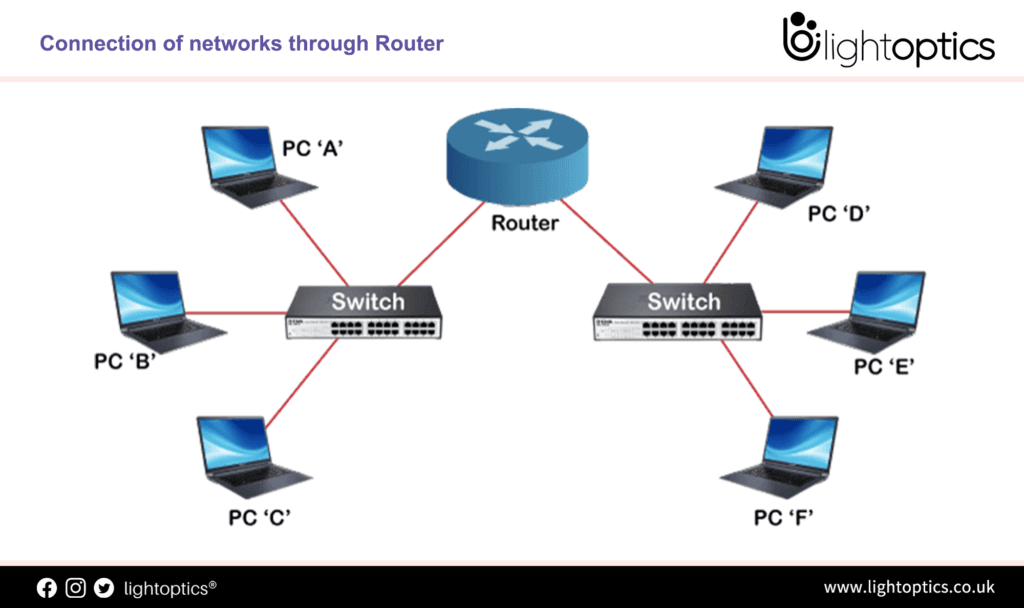Business to Business Networking Events connect companies for mutual growth. They offer a platform for exchanging ideas and building partnerships.
Networking events are essential for business success. They create opportunities to meet potential partners, clients, and industry leaders. These events can open doors to new markets and collaborations. In a world driven by connections, attending such events can significantly boost your business profile.
They provide a chance to learn from experts and peers. Whether you want to expand your network or strengthen existing ties, these events are invaluable. By engaging in them, businesses can gain insights and stay updated on industry trends. Embrace these opportunities to grow your network and your business.
Introduction To B2b Networking
Business to Business (B2B) networking is not just about exchanging business cards. It’s a dynamic platform where businesses come together to build relationships, share ideas, and create opportunities. Whether you’re a small business owner or a corporate executive, these events offer a unique chance to connect with potential partners, suppliers, and even competitors. Imagine walking into a room filled with professionals who share your interests and goals—this is where innovation meets collaboration.
Importance Of Networking
Networking is the lifeblood of any business. It opens doors to new opportunities and helps you build a strong support system. Have you ever landed a project simply because you knew the right person? That’s the power of networking. Building genuine relationships can lead to referrals, partnerships, and even friendships. Consider how much more effective your business strategy becomes when you have a network of allies to guide and support you.
Networking events give you the chance to learn from others in your industry. They can provide insights into new trends, technologies, and strategies. Don’t underestimate the value of a conversation during a coffee break—it could be the key to your next big idea or collaboration. Are you leveraging your network to its fullest potential?
Evolution Of B2b Events
B2B networking events have transformed over the years. Gone are the days of stuffy conferences and endless PowerPoint presentations. Today’s events are interactive, engaging, and often incorporate elements of technology to enhance the experience. Virtual networking has gained popularity, making it easier for you to connect with professionals worldwide without leaving your office.
The format of these events has become more diverse, ranging from speed networking sessions to themed workshops. This evolution caters to varied preferences and ensures that there’s something for everyone. Have you noticed the shift towards more personalized and targeted networking opportunities? It’s all about creating meaningful connections that drive business growth.
In your experience, how have B2B events shaped your business journey? Reflecting on past interactions can help you understand the value they bring. Are you ready to make the most of the next event?

Credit: www.gavelintl.com
Types Of B2b Networking Events
In the world of business, networking events play a vital role. They help companies build connections and share knowledge. Various types of B2B networking events exist, each offering unique benefits. Understanding these types can help businesses choose the right platform to connect and grow.
Trade Shows And Expos
Trade shows and expos gather industry leaders and professionals. These events showcase the latest products and services. Businesses can exhibit their offerings to a large audience. Attendees can explore new trends and technologies. Trade shows provide a platform for face-to-face interactions. This helps companies build trust and foster strong relationships.
Conferences And Seminars
Conferences and seminars focus on learning and development. They bring together experts to share insights on specific topics. Attendees gain valuable knowledge and skills. These events often feature keynote speakers and panel discussions. Participants can engage in interactive sessions and workshops. Conferences create opportunities for meaningful conversations and collaborations.
Planning For Success
Business to business networking events are a powerful way to forge meaningful connections and drive growth. But without a solid plan, you might miss out on valuable opportunities. Planning for success means going beyond just showing up. It involves setting clear objectives, researching potential attendees, and understanding the dynamics of the event. These steps can transform your networking experience into a strategic tool for business development.
Setting Clear Objectives
What do you hope to achieve from the event? Knowing your goals is crucial. Are you looking to find new clients, partners, or industry insights? This clarity will guide your interactions and help you focus your efforts.
Write down specific objectives before attending. This could be meeting three potential clients or gathering information on market trends. Such targets keep you motivated and focused during the event.
Ask yourself: What is the one thing that would make attending this event worthwhile? This question can refine your approach and ensure your time is well spent.
Researching Potential Attendees
Understanding who will be at the event can dramatically enhance your networking strategy. Are key industry players attending? Which businesses align with your goals?
Utilize event websites or social media platforms to identify attendees. Knowing who will be there can help you prepare personalized pitches and make meaningful connections.
Consider reaching out to attendees before the event. A simple introductory message can break the ice and set the stage for a productive conversation. Does this approach seem daunting? Start with just one or two people to ease into it.
Planning for success involves strategic thinking and proactive actions. With clear objectives and researched attendees, you’re setting yourself up for fruitful networking experiences.
Effective Networking Strategies
Business to business networking events offer valuable opportunities to build connections. These gatherings facilitate direct communication among industry professionals. Engaging in meaningful conversations can lead to partnerships and growth.
Networking at Business to Business (B2B) events can be a transformative experience for your career and business growth. However, without effective strategies, you might find yourself lost in a sea of conversations that lead nowhere. The key is to approach networking with a plan. This involves crafting a compelling elevator pitch and using social media strategically. These strategies can help you connect meaningfully and leave a lasting impression.Crafting Your Elevator Pitch
Creating a sharp and concise elevator pitch is crucial. Imagine you’re in an elevator with a potential client, and you have just a few seconds to grab their attention. Your pitch should highlight who you are, what you do, and why it matters—all in a way that sparks curiosity.Avoid jargon. Use simple language that anyone can understand. Consider this: what makes your business unique? Share a brief story or achievement that showcases your strengths.Practice your pitch. Rehearsing ensures confidence and clarity. When you feel confident, others are more likely to engage with you.Leveraging Social Media
Before attending a networking event, utilize social media to build your presence. Connect with attendees and organizers online. This can help break the ice and foster familiarity.Share relevant content about your industry. Engage with posts and comment thoughtfully to increase your visibility. Your online interactions can be a great starting point for conversations at the event.During the event, tweet or post updates. Share insights, tag people you meet, and use event hashtags. This keeps the conversation going beyond the physical event, extending your reach and impact.Are you making the most of your online connections? Engaging with people online can lead to real-world partnerships. Consider how you can turn virtual interactions into meaningful relationships.Maximizing Event Participation
Business to Business (B2B) networking events offer valuable opportunities. These events connect professionals, foster collaborations, and drive growth. To make the most of these events, strategic participation is key. Maximizing your involvement can lead to successful networking outcomes. Dive deeper with these actionable tips.
Engaging With Speakers
Speakers at B2B events often have valuable insights to share. Approach them after their sessions. Ask thoughtful questions. Express genuine interest in their topics. This helps build a connection. Prepare in advance by researching their backgrounds. Understand their expertise areas. This preparation can lead to meaningful conversations. Remember, engaging with speakers can open new doors.
Participating In Workshops
Workshops are interactive and insightful. They offer hands-on learning experiences. Actively participate to gain the most benefits. Contribute to discussions. Share your ideas and listen to others. This interaction can enhance your understanding. It also helps in building relationships. Stay open-minded during these sessions. Embrace new concepts and tools. Workshops can be a treasure trove of knowledge.
Building Long-term Relationships
Networking events foster connections between businesses, paving the way for lasting partnerships. These gatherings offer opportunities to share ideas and expand networks. Building strong relationships enhances business growth and mutual support.
Building long-term relationships is the cornerstone of successful business-to-business networking events. These connections are not just about swapping business cards; they are about fostering meaningful partnerships. When you invest time and effort into nurturing these relationships, you create a network that supports your business goals and growth.Follow-up Techniques
After a networking event, the real work begins. Follow-up is crucial to keeping the conversation going. Send a personalized email within 48 hours to express your appreciation for the meeting. Mention specific points from your conversation to show your genuine interest.Connect on social media platforms like LinkedIn to keep the lines of communication open. Share articles or insights that might benefit them. This not only adds value but also keeps you on their radar.Maintaining Connections
Building relationships is just the start; maintaining them is where the real challenge lies. Schedule regular catch-ups, whether it’s a quick coffee meeting or a virtual chat. These interactions strengthen your connection over time.Create a simple schedule to check in with your contacts. This could be once every quarter or based on your mutual availability. Use these opportunities to share updates about your business and inquire about their progress.Have you considered how you can support their business? Offering help or resources when possible can deepen your relationship. They’ll remember your generosity and are likely to reciprocate when the opportunity arises.Consistency and genuine interest in their success are key. How do you ensure your business relationships stand the test of time?Measuring Event Success
Evaluating the success of B2B networking events involves assessing attendee engagement and business connections made. Tracking metrics like the number of meaningful interactions and new partnerships formed can provide insight. Understanding these elements can help improve future events and enhance networking opportunities.
In the fast-paced world of business, measuring the success of a B2B networking event can often seem daunting. With so many elements at play, how do you know if your event truly hit the mark? Understanding the impact of your efforts is crucial not just for your satisfaction but also for future planning and growth. Let’s dive into the nuts and bolts of evaluating your event’s effectiveness.Analyzing Roi
Calculating the return on investment (ROI) of your event is a vital step. Did you achieve the objectives you set out? Compare the costs of organizing the event against the benefits, such as new business leads or partnerships.A practical approach is to set measurable goals before the event. This could include the number of contacts made or contracts signed. Having clear targets makes it easier to gauge success.Use metrics like attendee engagement and post-event sales to assess value. Numbers don’t lie, and they offer a straightforward way to evaluate your efforts. Are the results what you expected?Gathering Feedback
Feedback is your secret weapon. It provides insights that numbers can’t always show. Ask attendees for their thoughts on what worked and what didn’t.Surveys are a great tool for collecting honest opinions. Keep them short and to the point to ensure better response rates. What surprised you in the feedback?Consider holding a follow-up meeting with your team. Discuss the feedback and brainstorm improvements. This collaborative approach can spark innovative ideas for your next event.By diving into these strategies, you not only measure success but also pave the way for more impactful events in the future. How will you implement these tips in your next event?
Credit: mondo.com
Future Trends In B2b Networking
As the landscape of business continues to evolve, so too do the ways in which businesses connect with each other. B2B networking events are no longer just about exchanging business cards and handshakes. They are transforming into dynamic opportunities that leverage technology and innovative formats to create meaningful connections. The future trends in B2B networking are shaping how businesses will interact, collaborate, and grow together in the coming years.
Virtual And Hybrid Events
Virtual and hybrid events are becoming a staple in B2B networking. They offer the flexibility to connect with participants across the globe without the constraints of travel. This format also reduces costs and can lead to a higher attendance rate.
Imagine attending a networking event from the comfort of your home, while still engaging in real-time discussions with industry leaders. Hybrid events combine the best of both worlds—live face-to-face interactions and the convenience of virtual participation. This trend is not just a response to recent global events but a strategic shift towards inclusivity and accessibility.
Technology’s Role In Networking
Technology is reshaping the networking experience. Tools like artificial intelligence and machine learning are helping businesses identify the best connections to pursue. Algorithms can suggest potential partners based on your business needs and interests.
Have you ever attended an event where you felt overwhelmed by the sheer number of participants? Imagine a smart system that matches you with the most relevant contacts, saving you time and effort. This is the future of networking, where technology acts as a facilitator, enhancing the quality of interactions.
What if you could predict who would be the most beneficial contact to meet at an event? This is becoming a reality with the use of data analytics and predictive modeling. Technology is not just an add-on; it’s a crucial part of making networking more effective and targeted.
As we look ahead, consider how these trends can be integrated into your own networking strategies. Are you ready to embrace virtual platforms and leverage technology to stay ahead in the competitive B2B landscape?

Credit: promoambitions.com
Frequently Asked Questions
Is A Networking Event A Business Expense?
Yes, networking events can be considered a business expense. They help in building professional relationships and expanding business opportunities. Always keep receipts and documentation for tax purposes. Consult your accountant or tax advisor to ensure compliance with local tax laws.
What Is Business Networking Examples?
Business networking examples include attending industry conferences, joining professional associations, engaging on LinkedIn, participating in networking events, and collaborating on projects. These activities help build professional relationships, share knowledge, and open up new opportunities. Effective networking can lead to partnerships, mentorship, and business growth.
Are Paid Networking Events Worth It?
Paid networking events can be worth it for building valuable connections. They offer direct access to industry experts. Attendees often gain insights and opportunities not found elsewhere. Consider your goals and budget before deciding. Positive outcomes depend on active participation and networking skills.
What To Include In A Networking Event?
Include engaging speakers, interactive sessions, and networking opportunities. Provide refreshments, name tags, and a comfortable venue. Use social media for promotion and follow-up.
Conclusion
Business-to-business networking events create valuable connections. They help build trust and understanding. People share ideas and learn from each other. These events foster growth and collaboration. Joining these events boosts your business network. You meet potential partners and clients. Networking events offer insights into industry trends.
They are key to growing your business contacts. Attending regularly enhances your reputation. It’s a chance to showcase your business strengths. Engage actively and listen carefully. Expand your network efficiently. Remember to follow up with new contacts. Networking opens doors to exciting opportunities.
Take part and see your business thrive.










